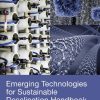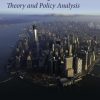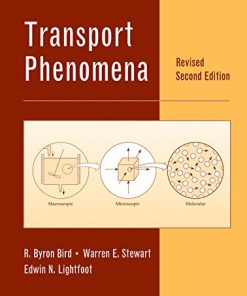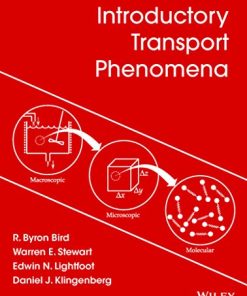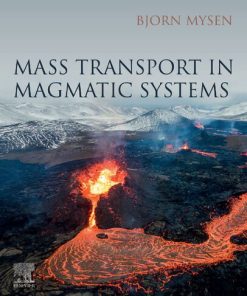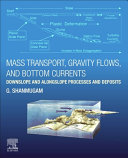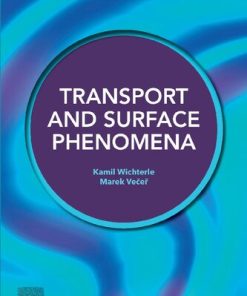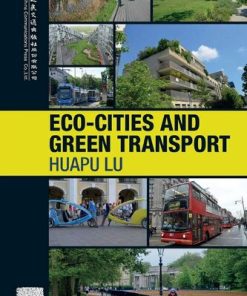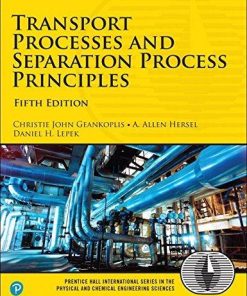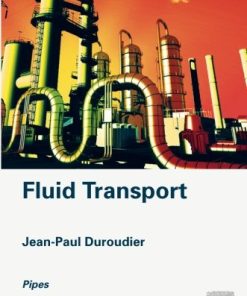(Ebook PDF) Rotary Kilns Transport Phenomena and Transport Processes 2nd Edition by Boateng 0128038535 9780128037805 9780128038536 full chapters
$50.00 Original price was: $50.00.$25.00Current price is: $25.00.
Rotary Kilns Transport Phenomena and Transport Processes 2nd Edition by A. A. Boateng – Ebook PDF Instant Download/DeliveryISBN: 0128038535, 9780128037805, 9780128038536
Full download Rotary Kilns Transport Phenomena and Transport Processes 2nd Edition after payment
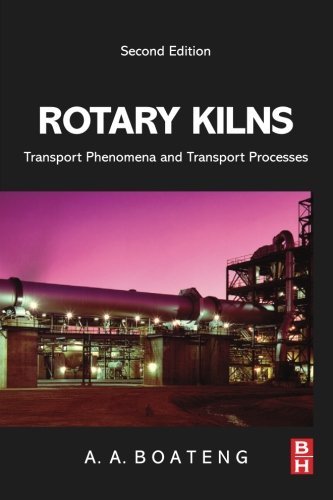
Product details:
ISBN-10 : 0128038535
ISBN-13 : 9780128037805 9780128038536
Author: A. A. Boateng
Rotary Kilns—rotating industrial drying ovens—are used for a wide variety of applications including processing raw minerals and feedstocks as well as heat-treating hazardous wastes. They are particularly critical in the manufacture of Portland cement. Their design and operation is critical to their efficient usage, which if done incorrectly can result in improperly treated materials and excessive, high fuel costs. This professional reference book will be the first comprehensive book in many years that treats all engineering aspects of rotary kilns, including a thorough grounding in the thermal and fluid principles involved in their operation, as well as how to properly design an engineering process that uses rotary kilns.
Rotary Kilns Transport Phenomena and Transport Processes 2nd Table of contents:
1. The Rotary Kiln Evolution and Phenomenon
1.1. The Rotary Kiln Evolution
1.2. Types of Rotary Kilns
2. Basic Description of Rotary Kiln Operation
2.1. Bed Phenomenon
2.2. Geometrical Features and Their Transport Effects
2.3. Transverse Bed Motion
2.4. Experimental Observations of Transverse Flow Behavior
2.5. Axial Motion
2.6. Dimensionless Residence Time
3. Freeboard Aerodynamic Phenomena
3.1. Fluid Flow in Pipes: General Background
3.2. Basic Equations of Multicomponent Reacting Flows
3.3. Development of a Turbulent Jet
3.4. Confined Jets
3.5. Swirling Jets
3.6. Precessing Jets
3.7. The Particle-Laden Jet
3.8. Dust Entrainment
3.9. ID Fan
4. Granular Flows in Rotary Kilns
4.1. Flow of Granular Materials (Granular Flows)
4.2. The Equations of Motion for Granular Flows
4.3. Particulate Flow Behavior in Rotary Kilns
4.4. Overview of the Observed Flow Behavior in a Rotary Drum
4.5. Particulate Flow Model in Rotary Kilns
4.6. Model Results and Validation
4.7. Application of the Flow Model
5. Mixing and Segregation
5.1. Modeling of Particle Mixing and Segregation in Rotary Kilns
5.2. Bed Segregation Model
5.3. The Governing Equations for Segregation
5.4. Boundary Conditions
5.5. Solution of the Segregation Equation
5.6. Numerical Solution of the Governing Equations
5.7. Validation of the Segregation Model
5.8. Application of Segregation Model
6. Combustion and Flame
6.1. Combustion
6.2. Mole and Mass Fractions
6.3. Combustion Chemistry
6.4. Practical Stoichiometry
6.5. Adiabatic Flame Temperature
6.6. Types of Fuels Used in Rotary Kilns
6.7. Coal Types, Ranking, and Analysis
6.8. Petroleum Coke Combustion
6.9. Scrap Tire Combustion
6.10. Pulverized Fuel (Coal/Coke) Firing in Kilns
6.11. Pulverized Fuel Delivery and Firing Systems
6.12. Estimation of Combustion Air Requirement
6.13. Reaction Kinetics of Carbon Particles
6.14. Fuel Oil Firing
6.15. Combustion Modeling
6.16. Flow Visualization Modeling (Acid–Alkali Modeling)
6.17. Mathematical Modeling Including CFD
6.18. Gas-Phase Conservation Equations Used in CFD Modeling
6.19. Particle-Phase Conservation Equations Used in CFD Modeling
6.20. Emissions Modeling
6.21. CFD Evaluation of a Rotary Kiln Pulverized Fuel Burner
7. Freeboard Heat Transfer
7.1. Overview of Heat Transfer Mechanisms
7.2. Conduction Heat Transfer
7.3. Convection Heat Transfer
7.4. Conduction–Convection Problems
7.5. Shell Losses
7.6. Refractory Lining Materials
7.7. Heat Conduction in Rotary Kiln Wall
7.8. Radiation Heat Transfer
7.9. Radiation Shape Factors
7.10. Radiation Exchange between Multiple Gray Surfaces
7.11. Radiative Effect of Combustion Gases
7.12. Heat Transfer Coefficients for Radiation in the Freeboard of a Rotary Kiln
7.13. Radiative Exchange from the Freeboard Gas to Exposed Bed and Wall Surfaces
7.14. Radiative Heat Transfer among Exposed Freeboard Surfaces
8. Heat Transfer Processes in the Rotary Kiln Bed
8.1. Heat Transfer between the Covered Wall and the Bed
8.2. Modified Penetration Model for Rotary Kiln Wall-to-Bed Heat Transfer
8.3. Effective Thermal Conductivity of Packed Beds
8.4. Effective Thermal Conductivity in Rotating Bed Mode
8.5. Thermal Modeling of Rotary Kiln Processes
8.6. Description of the Thermal Model
8.7. One-Dimensional Thermal Model for Bed and Freeboard
8.8. Two-Dimensional Thermal Model for the Bed
8.9. The Combined Axial and Cross-Sectional Model—The Quasi-Three-Dimensional Model for the Bed
8.10. Solution Procedure
8.11. Model Results and Application
8.12. Single-Particle Heat Transfer Modeling for Expanded Shale Processing
9. Mass and Energy Balance
9.1. Chemical Thermodynamics
9.2. Gibbs Free Energy and Entropy
9.3. Global Heat and Material Balance
9.4. Thermal Module for Chemically Reactive System
9.5. Mass Balance Inputs
9.6. Chemical Compositions
9.7. Energy Balance Inputs
9.8. Site Survey—Measured Variables
9.9. Shell Heat Loss Calculations
9.10. Calcination Module Calculation
9.11. Combustion
9.12. Energy Balance Module
9.13. Sensible Energy for Output Streams
10. Rotary Kiln Minerals Process Applications
10.1. Lime Making
10.2. Limestone Dissociation (Calcination)
10.3. The Rotary Lime Kiln
10.4. The Cement-Making Process
10.5. The Cement Process Chemistry
10.6. Rotary Cement Kiln Energy Usage
10.7. Mineral Ore Reduction Processes in Rotary Kilns
10.8. The Rotary Kiln Lightweight Aggregate-Making Process
10.9. The Rotary Kiln Pyrolysis/Carbonization
11. Rotary Kiln Petroleum Coke Calcination Process: Some Design Considerations
11.1. Introduction
11.2. The Rotary Calcining Integrated System
11.3. Direct-Fired Kiln Characteristics
11.4. Mass Balance
11.5. Thermal Balance and Energy Use
11.6. Volatile Matter
11.7. Dust Output and Pickup
11.8. Fixed Carbon Recovery and Burnout
11.9. Kinetics and Product Quality
11.10. Direct-Fired Pet-Coke Kiln Temperature Profiles
11.11. Design Structure
11.12. Computational Fluid Dynamic Modeling (Pyroscrubber)
12. Rotary Kiln Environmental Applications
12.1. Basic Regulatory Framework for Waste Burning Kilns
12.2. Hazardous Waste Incineration
12.3. Dual Use—Combustion Systems
12.4. Carbon Emissions, Reduction, and Capture
People also search for Rotary Kilns Transport Phenomena and Transport Processes 2nd:
what are transport processes
types of transport processes
what are the 4 transportation processes
transport phenomena examples
transport phenomena in biological systems
Tags:
Rotary Kilns,Transport Phenomena,Transport Processes,Boateng
You may also like…
Relationships & Lifestyle - Families & Parents
Engineering - Environmental
Science (General)


